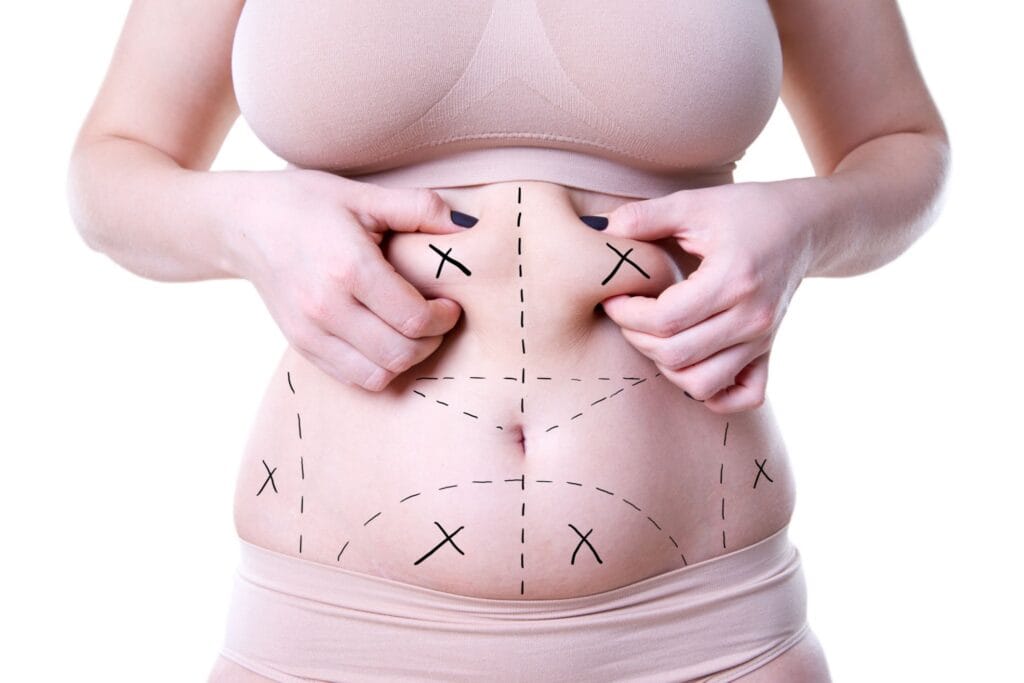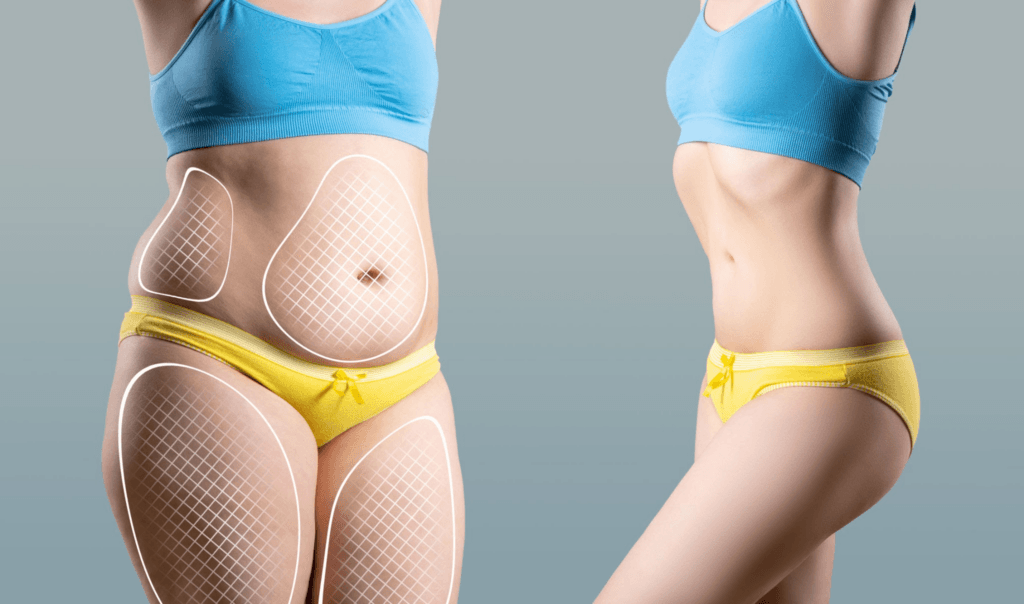Welcome to our comprehensive guide on liposuction, a widely sought-after cosmetic procedure designed to reshape and contour the body by removing stubborn fat deposits. In a world increasingly focused on aesthetic well-being, liposuction stands out as an effective solution for individuals looking to achieve a more sculpted physique that diet and exercise alone cannot address. This article will delve deep into every facet of liposuction, offering a clear and detailed overview of what this procedure entails.
From understanding its fundamental definition and historical evolution to exploring the intricate details of the surgical process, including various techniques and anesthesia options, we aim to provide you with all the necessary information. We will also critically examine the potential benefits and inherent risks associated with liposuction, helping you make an informed decision. Furthermore, we’ll guide you through the crucial recovery phase and offer insights into long-term care to maintain your results. By the end of this read, you will have a holistic understanding of liposuction, empowering you to discuss your options confidently with a qualified professional.

Sommario
Capire la liposuzione
Definition and Basic Explanation
At its core, liposuction is a surgical procedure that uses a suction technique to remove fat from specific areas of the body, such as the abdomen, hips, thighs, buttocks, arms, or neck. It is not a weight-loss solution but rather a body contouring procedure aimed at reducing localized fat pockets that are resistant to traditional weight loss methods. The procedure involves inserting a thin tube, called a cannula, through small incisions into the fat layer beneath the skin. The cannula is then moved back and forth to break up the fat cells, which are subsequently suctioned out of the body using a surgical vacuum or a syringe.
The primary goal of liposuction is to improve body shape and proportion by removing excess fat, resulting in a smoother contour and a more aesthetically pleasing appearance. It’s crucial to understand that liposuction permanently removes fat cells from the treated areas. However, if a person gains weight after liposuction, the remaining fat cells in the treated area, and fat cells in untreated areas, can still enlarge. Therefore, maintaining a stable weight through a healthy lifestyle after the procedure is essential for preserving the results.
Historical Background
The concept of removing fat for cosmetic purposes dates back to the early 20th century, but the techniques were crude and often resulted in severe complications. The true genesis of modern liposuction can be traced to the late 1970s. In 1974, Italian gynecologist Dr. Giorgio Fischer and his father, Arpad Fischer, developed the “blunt dissection” technique using a rotating scalpel, followed by suction. This marked a significant departure from previous methods, which involved large excisions and carried high risks of bleeding and disfigurement.
However, it was French surgeons Dr. Yves-Gerard Illouz and Dr. Pierre Fournier who revolutionized the procedure in 1977 and 1978. Illouz introduced the “wet technique,” involving the injection of saline solution into the fat before suction, which helped to reduce bleeding. Fournier further refined this by introducing the concept of using blunt cannulas and the “tumescent technique,” where a large volume of dilute anesthetic solution (saline, lidocaine, and epinephrine) is injected into the fatty tissue.
This innovation dramatically improved safety, reduced blood loss, and enhanced the overall results by making fat removal easier and less traumatic. Since then, continuous advancements in technology and surgical understanding have led to the development of various sophisticated liposuction techniques, making it one of the most popular cosmetic procedures worldwide.

Aree comuni trattate
Liposuction is remarkably versatile and can be used to sculpt various parts of the body where stubborn fat tends to accumulate. Understanding these common treatment areas can help individuals identify if liposuction is a suitable option for their specific concerns. The most frequently treated areas include:
- Abdomen and Waist: One of the most common areas, liposuction here can significantly reduce the “muffin top” or “love handles,” creating a flatter stomach and a more defined waistline.
- Thighs: Both the inner and outer thighs (saddlebags) are popular targets. Liposuction can create a more streamlined silhouette and reduce rubbing between the inner thighs.
- Hips: Reshaping the hips can improve the overall body proportion, especially in relation to the waist and thighs.
- Buttocks: While not for general reduction, liposuction can refine the shape of the buttocks, often in conjunction with other areas to achieve a more balanced contour.
- Arms: “Bat wings” or excess fat on the upper arms can be effectively removed, resulting in more toned-looking arms.
- Back: Fat deposits on the upper, middle, or lower back can be reduced, improving the fit of clothing and overall body shape. This includes bra rolls.
- Chin and Neck (Submental Area): Liposuction in this area can eliminate a double chin and define the jawline, leading to a more youthful facial profile.
- Male Chest (Gynecomastia): For men experiencing enlarged breast tissue, liposuction can reduce the fat component, creating a flatter, more masculine chest.
- Knees and Calves: Less common but still treatable, liposuction can reduce fat around the knees and shape the calves for a more defined lower leg.
It’s important to note that while these are common areas, a qualified surgeon will assess individual needs and recommend the most appropriate treatment plan to achieve the desired aesthetic goals.

The Liposuction Procedure
Step-by-Step Description
Understanding the liposuction procedure in detail can alleviate concerns and set realistic expectations. While specific steps may vary slightly depending on the technique and the surgeon, the general process follows a predictable pattern:
- Consultation: The journey begins with a thorough consultation with a board-certified plastic surgeon. During this meeting, you will discuss your aesthetic goals, medical history, and any underlying health conditions. The surgeon will evaluate your skin elasticity, fat distribution, and overall health to determine if you are a suitable candidate. This is also the time to ask any questions and clarify expectations.
- Pre-Procedure Instructions: Once you decide to proceed, your surgeon will provide specific instructions for preparation. This typically includes avoiding certain medications (like blood thinners, aspirin, and anti-inflammatory drugs) for a period before surgery, refraining from smoking, and arranging for someone to drive you home after the procedure.
- Somministrazione dell'anestesia: On the day of the procedure, anesthesia will be administered. The choice of anesthesia—local, sedation, or general—depends on the extent of the liposuction, the number of areas being treated, and patient preference. Your comfort and safety are paramount.
- Incision Creation: Small, inconspicuous incisions (usually 3-5 millimeters) are made in the target areas. These incisions are strategically placed to be as hidden as possible within natural skin folds or creases.
- Tumescent Fluid Infiltration (for Tumescent & Super-Wet techniques): A sterile solution, often containing saline, lidocaine (a local anesthetic), and epinephrine (a vasoconstrictor to reduce bleeding and bruising), is injected into the fatty tissue. This fluid swells and firms the fatty area, making fat removal easier, more efficient, and reducing discomfort and blood loss.
- Fat Emulsification/Loosening: Depending on the technique used, the fat cells may be further emulsified or loosened. For instance, in Ultrasound-Assisted Liposuction (UAL), ultrasonic energy is used, while in Laser-Assisted Liposuction (LAL), laser energy melts the fat. In traditional tumescent liposuction, the cannula itself helps break up the fat.
- Fat Suctioning: A thin, hollow tube called a cannula is inserted through the incisions. The surgeon manipulates the cannula back and forth to break up and dislodge the fat cells. A vacuum pump or syringe attached to the cannula then suctions the loosened fat and tumescent fluid out of the body. The surgeon meticulously works to create a smooth, contoured result.
- Closure of Incisions: Once the desired amount of fat has been removed and the area is contoured, the small incisions are typically left open to allow residual fluid to drain, or they may be closed with a single stitch.
- Compression Garment Application: A compression garment is applied immediately after the procedure to the treated areas. This garment helps to reduce swelling, promote skin retraction, and support the new body contours.
- Recovery Room: You will be monitored in a recovery area until the effects of the anesthesia wear off.
The duration of the procedure varies based on the number of areas treated and the volume of fat removed, but it can range from one to several hours.
Types of Liposuction Techniques
Liposuction has evolved significantly, leading to various techniques designed to enhance safety, efficiency, and patient comfort. While the core principle of fat removal remains, the methods of preparing and extracting fat differ. The most common techniques include:
- Liposuzione tumescente: This is the most common and widely adopted technique. It involves injecting a large volume of a sterile solution (tumescent fluid – saline, lidocaine, and epinephrine) into the fatty tissue before fat removal. The fluid causes the fatty tissue to swell and firm up, making it easier to remove fat while minimizing blood loss, bruising, and discomfort. The lidocaine numbs the area, and epinephrine constricts blood vessels.
- Super-Wet Technique: Similar to tumescent liposuction, but a smaller volume of tumescent fluid is used, usually equal to the amount of fat expected to be removed. This technique is faster but may lead to slightly more bruising compared to the full tumescent method.
- Liposuzione assistita da ultrasuoni (UAL): UAL uses ultrasonic energy to liquefy fat cells before they are suctioned out. A special cannula emits ultrasonic vibrations that rupture the walls of the fat cells, turning the fat into an emulsion. This technique can be particularly effective for fibrous areas of the body, such as the back or male breasts, and for secondary liposuction procedures where scar tissue may be present. It can also help with skin tightening.
- Laser-Assisted Liposuction (LAL) / SmartLipo: LAL uses a laser fiber inserted through small incisions to deliver controlled bursts of laser energy. This energy heats and melts the fat cells, making them easier to remove. The laser energy also stimulates collagen production, which can lead to skin tightening in the treated area. LAL is often preferred for smaller areas and for patients seeking both fat reduction and improved skin laxity.
- Liposuzione assistita da potenza (PAL): PAL utilizes a cannula that rapidly vibrates or oscillates, allowing the surgeon to remove fat more easily and efficiently. The rapid motion of the cannula breaks up the fat cells with less physical effort from the surgeon, potentially leading to a more precise and smoother result. PAL can reduce surgeon fatigue and may be beneficial for removing larger volumes of fat or treating fibrous areas.
The choice of technique depends on various factors, including the patient’s individual needs, the amount of fat to be removed, the area of the body being treated, and the surgeon’s expertise and preference. Often, a combination of techniques may be used to achieve optimal results.
Opzioni di anestesia
The type of anesthesia chosen for liposuction depends on the extent of the procedure, the number of areas being treated, and the patient’s overall health and preference. A thorough discussion with your surgeon and anesthesiologist will determine the safest and most comfortable option for you. The main anesthesia options include:
- Local Anesthesia: This involves numbing only the specific area being treated with an injection, similar to what you might receive at the dentist. It’s often combined with tumescent fluid (containing lidocaine) for smaller, more localized liposuction procedures. You remain awake and aware during the procedure, though you might feel some pressure or movement.
- Local Anesthesia with Sedation (Conscious Sedation / IV Sedation): This option combines local anesthesia with intravenous (IV) sedation. The sedation helps you relax and feel drowsy, often putting you in a “twilight sleep” where you are still responsive but largely unaware of the procedure. This is a very common choice for many liposuction procedures as it offers significant comfort without the full risks associated with general anesthesia.
- Anestesia generale: Under general anesthesia, you are completely unconscious and unaware of the procedure. It is typically used for larger, more extensive liposuction procedures involving multiple body areas or significant fat removal. General anesthesia requires an anesthesiologist to monitor your vital signs throughout the surgery. While highly effective for pain management and patient comfort, it carries a slightly higher risk profile compared to local or sedation options.
Before the procedure, your medical history will be thoroughly reviewed to ensure the chosen anesthesia is safe for you. The anesthesiologist will discuss the risks and benefits of each option and answer any questions you may have, ensuring you feel comfortable and informed.

Benefits and Risks of Liposuction
Potential Benefits
Liposuction offers a range of aesthetic and, in some cases, psychological benefits for individuals seeking body contouring. While it’s crucial to have realistic expectations, the positive outcomes can be significant:
- Improved Body Contour and Proportion: This is the primary benefit. Liposuction effectively removes localized fat deposits that are resistant to diet and exercise, leading to a more sculpted and harmonious body shape. It can create a flatter abdomen, more defined waist, slimmer thighs, or more toned arms.
- Enhanced Self-Confidence and Body Image: Achieving a more desired body shape can significantly boost a person’s self-esteem and confidence. Many patients report feeling more comfortable in their clothing and more confident in social situations.
- Permanent Fat Removal: Fat cells are permanently removed from the treated areas. While remaining fat cells can still expand if weight is gained, the treated areas will typically retain a better contour than if liposuction had not been performed.
- Improved Fit of Clothing: With reduced bulges and a more streamlined silhouette, clothing often fits better and looks more flattering, expanding wardrobe options.
- Motivation for Healthy Lifestyle: For many, the investment in liposuction serves as a powerful motivator to maintain a healthy diet and regular exercise routine, preserving the results and promoting overall well-being.
- Treatment of Certain Medical Conditions: While primarily cosmetic, liposuction can sometimes help with conditions like:
- Lipomas: Benign fatty tumors.
- Lymphedema: Swelling caused by lymph fluid accumulation (though not a cure, it can help manage symptoms).
- Gynecomastia: Reduction of enlarged male breasts due to excess fat.
- Relief from Physical Discomfort: In some cases, reducing large fat deposits (e.g., inner thighs causing chafing) can alleviate physical discomfort.
It’s important for potential patients to understand that liposuction is a body contouring procedure, not a weight-loss solution, and the best results are seen in individuals who are already near their ideal weight with good skin elasticity.
Possible Risks and Complications
Like any surgical procedure, liposuction carries potential risks and complications, even when performed by a skilled and experienced surgeon. It’s vital to be fully aware of these before making an informed decision:
- Gonfiore e lividi: These are the most common side effects and are temporary. They can persist for weeks or even months, gradually resolving over time.
- Dolore e disagio: Mild to moderate pain is expected after surgery and can be managed with medication. Discomfort typically subsides within a few days to a week.
- Numbness or Altered Sensation: Temporary or, in rare cases, permanent numbness or changes in skin sensation in the treated areas can occur due to nerve irritation or damage.
- Infezione: Though rare, infection at the incision sites or within the treated area is a possibility, requiring antibiotic treatment.
- Contour Irregularities: Uneven fat removal, dimpling, rippling, or loose skin can occur, leading to an irregular or asymmetric appearance. This risk is minimized with a skilled surgeon and proper technique.
- Seroma: Accumulation of fluid under the skin, which may require drainage.
- Hematoma: Collection of blood under the skin, which may also require drainage.
- Skin Discoloration: Persistent skin discoloration or hyperpigmentation in the treated areas is rare but possible.
- Allergic Reactions: Reactions to anesthesia or other medications.
- Fat Embolism: A very rare but serious complication where loosened fat particles enter the bloodstream and travel to the lungs or brain, potentially causing life-threatening issues. The risk is extremely low with modern techniques and proper patient selection.
- Puncture of Internal Organs: Extremely rare but possible if the cannula penetrates too deeply, leading to injury to internal organs.
- Lidocaine Toxicity: If large volumes of tumescent fluid with lidocaine are used, there’s a small risk of lidocaine toxicity, leading to seizures or cardiac issues. This is mitigated by adhering to safe dosage limits.
Choosing a board-certified plastic surgeon with extensive experience in liposuction is paramount to minimizing these risks. Your surgeon will thoroughly discuss all potential complications during your consultation.
Factors to Consider
Before deciding on liposuction, a careful consideration of several factors is essential to ensure it’s the right choice for you and to set realistic expectations:
- Your Health Status: You should be in good general health with no life-threatening medical conditions, no active infections, and no conditions that could impair healing. Conditions like uncontrolled diabetes, heart disease, or significant blood clotting disorders may contraindicate the procedure.
- Aspettative realistiche: Liposuction is not a magic bullet for weight loss or a substitute for a healthy lifestyle. It’s a body contouring procedure. Individuals with realistic expectations about the outcomes, understanding that it will refine rather than drastically change their body, tend to be the most satisfied.
- Elasticità della pelle: The best candidates have good skin elasticity, as this allows the skin to retract smoothly over the newly contoured areas after fat removal. Poor skin elasticity can result in loose or sagging skin, which may require additional procedures like a tummy tuck or body lift.
- Localized Fat Deposits: Liposuction is most effective for removing stubborn pockets of fat that haven’t responded to diet and exercise. It’s not suitable for treating generalized obesity.
- Stable Weight: Ideal candidates are typically at or near their ideal body weight. Significant weight fluctuations after liposuction can compromise the results.
- Non-Smoker Status: Smoking impairs healing and increases the risk of complications. Surgeons often require patients to stop smoking several weeks before and after surgery.
- Understanding of Risks and Recovery: A full comprehension of the potential risks, the recovery process, and the commitment to follow post-operative instructions is crucial for a smooth outcome.
- Cost: Liposuction is an elective cosmetic procedure and is typically not covered by insurance. You should be prepared for the financial investment, which includes surgeon’s fees, anesthesia fees, facility fees, and post-operative garments.
- Surgeon’s Qualifications: The most critical factor. Choose a board-certified plastic surgeon with extensive experience in liposuction. Verify their credentials, look at before-and-after photos, and read patient reviews.
An honest assessment of these factors, in consultation with a qualified surgeon, will help determine if liposuction is the appropriate path to achieve your body goals.
Recupero e post-trattamento
What to Expect During Recovery
The recovery process after liposuction is a crucial phase that significantly impacts the final results. While individual experiences vary, here’s a general overview of what to expect:
- Immediate Post-Op (First 24-48 Hours):
- Drainage: You may notice drainage of the tumescent fluid (which can be pinkish) from the incision sites. This is normal and beneficial for reducing swelling. Your surgeon may apply absorbent pads.
- Compression Garment: A compression garment will be applied immediately after surgery. This is essential for reducing swelling, minimizing fluid retention, and helping the skin contract smoothly over the new contours. It must be worn as instructed, often for several weeks.
- Malessere: You will experience some pain, soreness, and tenderness in the treated areas, similar to intense muscle soreness. This can be managed with prescribed pain medication.
- Gonfiore e lividi: Significant swelling and bruising are expected. These will be most noticeable in the first few days and will gradually subside.
- Intorpidimento: Areas that were treated may feel numb or have altered sensation.
- First Week:
- Mobility: Light walking is encouraged to promote circulation and prevent blood clots, but strenuous activity should be avoided.
- Soreness: Soreness will persist but should gradually improve.
- Swelling: Still present, but may start to reduce slightly.
- Return to Light Activities: Most patients can return to light, non-strenuous work or daily activities within a few days to a week, depending on the extent of the procedure.
- Weeks 2-4:
- Significant Swelling Reduction: Much of the initial swelling will decrease, and you may start to see some preliminary results, though significant swelling will still be present.
- Bruising Fades: Most bruising should resolve.
- Increased Activity: You can gradually resume more normal activities, but still avoid heavy lifting and intense exercise.
- Compression Garment: Continue wearing the compression garment as advised by your surgeon.
- Months 1-6:
- Continued Swelling Resolution: Residual swelling can take several months to fully dissipate, especially in larger areas. The final results may not be apparent until 3-6 months, or even up to a year.
- Return to Full Activity: Most patients can return to all normal activities, including strenuous exercise, by 4-6 weeks, or as cleared by their surgeon.
- Skin Retraction: The skin continues to retract and tighten over the treated area.
Follow-up appointments with your surgeon are crucial during this period to monitor your healing progress and address any concerns.
Tips for a Smooth Recovery
A successful liposuction outcome isn’t just about the surgery; it’s equally about proper post-operative care. Following these tips can significantly contribute to a smoother, more comfortable, and effective recovery:
- Wear Your Compression Garment Diligently: This is arguably the most critical aspect of recovery. Wear the garment exactly as prescribed by your surgeon (usually 24/7 for the first few weeks, then perhaps only during the day for several more). It helps reduce swelling, prevents fluid accumulation, and aids in skin retraction and contouring.
- Stay Hydrated: Drink plenty of water. Proper hydration helps your body flush out toxins and reduces swelling.
- Eat a Healthy, Balanced Diet: Focus on nutrient-rich foods, especially lean proteins, fruits, and vegetables. A healthy diet supports healing and helps maintain your new weight. Avoid excessive sodium, which can increase swelling.
- Gentle Movement and Light Walking: Start walking as soon as your surgeon allows, usually within a day or two. Light activity prevents blood clots, promotes circulation, and can help reduce swelling. Avoid strenuous exercise until cleared by your surgeon, typically 4-6 weeks.
- Manage Pain: Take prescribed pain medication as directed. Do not wait for pain to become severe before taking it. Over-the-counter pain relievers (like Tylenol) may be sufficient for milder discomfort once initial pain subsides.
- Avoid Strenuous Activities and Heavy Lifting: For several weeks, avoid activities that put strain on the treated areas. This includes heavy lifting, intense workouts, and contact sports.
- Get Adequate Rest: Your body needs energy to heal. Prioritize sleep and allow yourself time to rest and recover.
- Avoid Smoking and Alcohol: Smoking significantly impairs healing and increases complication risks. Alcohol can dehydrate you and interact with medications. Avoid both during recovery.
- Massage (If Recommended): Your surgeon may recommend gentle lymphatic drainage massage to help reduce swelling and improve healing. If so, ensure it’s performed by a qualified therapist.
- Keep Incisions Clean and Dry: Follow your surgeon’s instructions for wound care to prevent infection.
- Attend All Follow-Up Appointments: These appointments are vital for your surgeon to monitor your progress, address concerns, and guide your recovery.
- Be Patient: Results are not immediate. Swelling can persist for months, and the final contours will gradually emerge. Be patient with your body’s healing process.
By diligently following these guidelines, you can significantly enhance your recovery experience and optimize your liposuction results.
Long-Term Care and Maintaining Results
Liposuction permanently removes fat cells from the treated areas, but it does not prevent you from gaining weight in other areas of your body, nor does it remove all fat cells from the treated areas. Therefore, long-term care and commitment to a healthy lifestyle are paramount to maintaining your beautifully sculpted results:
- Maintain a Stable Weight: This is the single most important factor. Significant weight gain after liposuction can lead to fat accumulation in untreated areas and can also cause the remaining fat cells in the treated areas to enlarge, potentially compromising your results. Strive to keep your weight stable, ideally within 5-10 pounds of your weight at the time of surgery.
- Embrace a Healthy, Balanced Diet: Focus on a diet rich in whole foods, lean proteins, fruits, vegetables, and healthy fats. Limit processed foods, sugary drinks, and excessive saturated or unhealthy fats. A balanced diet provides the nutrients your body needs and helps prevent weight gain.
- Esercizio fisico regolare: Incorporate a consistent exercise routine into your lifestyle. This should include a combination of cardiovascular activities (to burn calories and maintain heart health) and strength training (to build and maintain muscle mass, which boosts metabolism). Physical activity also helps maintain good circulation and overall well-being.
- Stay Hydrated: Continue to drink plenty of water throughout the day. Hydration supports metabolic functions and general health.
- Lifestyle Choices: Avoid smoking, which negatively impacts skin elasticity and overall health, and limit alcohol consumption.
- Protezione solare: Protect your skin, especially any treated areas or incision sites, from excessive sun exposure. Sun can darken scars and potentially affect skin health.
- Monitor Your Body: Pay attention to your body and any changes. If you notice weight creeping up, address it proactively through diet and exercise adjustments.
- Consider Follow-Up Consultations: While not always necessary, if you have concerns about your long-term results or experience significant weight changes, a follow-up consultation with your surgeon can be beneficial.
Think of liposuction as a catalyst for a healthier lifestyle. It provides a sculpted foundation, and your ongoing commitment to diet, exercise, and overall wellness will ensure the longevity and beauty of your results.

Conclusione
Liposuction is a powerful body contouring procedure that has helped countless individuals achieve a more refined and aesthetically pleasing silhouette. Throughout this comprehensive guide, we’ve explored its evolution, detailed the surgical process, examined the benefits and risks, and outlined the critical steps for recovery and long-term maintenance. It is not a weight-loss solution but a precise tool for removing stubborn, localized fat deposits that have resisted conventional methods.
Making an informed decision about liposuction requires a thorough understanding of what the procedure entails, realistic expectations about its outcomes, and an honest assessment of your health and lifestyle. The journey from consultation to final results demands patience, commitment to post-operative care, and a dedication to maintaining a healthy lifestyle to preserve your new contours.
Ultimately, liposuction can be a transformative experience, significantly enhancing body confidence and improving the way you feel in your own skin. However, it is a significant medical procedure that requires careful consideration. We strongly encourage anyone contemplating liposuction to consult with a board-certified plastic surgeon. A qualified professional can provide personalized advice, assess your suitability, discuss all options, and help you determine the best path forward for achieving your aesthetic goals safely and effectively.
Key Takeaways
- Liposuction is a body contouring procedure, not a weight loss solution, designed to remove stubborn fat pockets resistant to diet and exercise.
- Various techniques exist (tumescent, UAL, LAL, PAL), each offering specific advantages, chosen based on individual needs and surgeon expertise.
- Recovery involves expected swelling, bruising, and discomfort, with diligent adherence to compression garment use and post-operative instructions being crucial for optimal results.
- Maintaining a stable weight through a healthy diet and regular exercise is paramount for preserving the long-term benefits of liposuction.
Domande frequenti
What is the ideal candidate for liposuction?
The ideal candidate for liposuction is typically a healthy individual who is at or near their ideal body weight but has localized pockets of stubborn fat that do not respond to diet and exercise. Key characteristics include good skin elasticity (allowing the skin to retract smoothly after fat removal), non-smoker status, no serious medical conditions (like heart disease or diabetes), and realistic expectations about the procedure’s outcomes. Liposuction is not a treatment for obesity or a substitute for a healthy lifestyle. Candidates should be committed to maintaining a stable weight post-procedure to preserve their results.
How long does it take to see the final results of liposuction?
While some immediate changes are visible after liposuction, the final results are not apparent for several months due to post-operative swelling. Initial swelling usually subsides significantly within 3-4 weeks, but residual swelling can take 3 to 6 months, or even up to a year, to fully resolve. As the swelling goes down and the skin retracts, the true contours will gradually emerge. Patience is key during the recovery period.
Can liposuction help with weight loss?
No, liposuction is not a weight-loss procedure. It is a body contouring procedure designed to remove localized fat deposits and reshape specific areas of the body. While a small amount of weight may be lost from the fat removed, it is generally considered minimal in the context of overall body weight. For individuals seeking significant weight loss, bariatric surgery or a comprehensive weight management program is more appropriate. Liposuction is most effective for individuals who are already close to their target weight and want to refine their shape.
What are the alternatives to liposuction?
For individuals who are not candidates for liposuction or prefer non-surgical options, several alternatives can help reduce fat or improve body contour. These include:
- Non-Surgical Fat Reduction:
- Cryolipolysis (CoolSculpting): Uses controlled cooling to freeze and eliminate fat cells.
- Radiofrequency (RF) Lipolysis: Uses heat to destroy fat cells (e.g., Vanquish, BodyFX).
- Laser Lipolysis (Non-Invasive): Uses external laser energy to reduce fat (e.g., SculpSure).
- Ultrasound Fat Reduction (Non-Invasive): Uses focused ultrasound energy to break down fat cells (e.g., Ultrashape).
- Injectable Deoxycholic Acid (Kybella): An injectable treatment specifically for submental fat (double chin).
- Other Surgical Procedures:
- Tummy Tuck (Abdominoplasty): Removes excess skin and fat from the abdomen and tightens abdominal muscles. Often combined with liposuction for comprehensive abdominal contouring.
- Lifting corporeo: Addresses excess skin and fat in multiple areas after significant weight loss (e.g., lower body lift, upper body lift).
- Brachioplastica (lifting delle braccia): Removes excess skin and fat from the upper arms.
- Lifting delle cosce: Removes excess skin and fat from the thighs.
- Lifestyle Changes: Consistent diet and exercise remain the primary and most sustainable methods for overall fat reduction and weight management.
The best alternative depends on the individual’s specific concerns, desired outcomes, and willingness to undergo surgical vs. non-surgical treatments.
How much does liposuction typically cost?
The cost of liposuction varies significantly depending on several factors, including: the areas of the body being treated (larger areas or multiple areas cost more), the amount of fat to be removed, the chosen liposuction technique, the surgeon’s fees (which vary based on experience and location), anesthesia fees, facility fees, and post-operative garments. According to the American Society of Plastic Surgeons, the average surgeon’s fee for liposuction was approximately $3,800 in 2020. However, the total cost can range from $2,000 to $8,000 or more per area. It’s crucial to get a detailed quote from your surgeon’s office during the consultation, which should include all associated costs.
Is liposuction covered by insurance?
In most cases, liposuction is considered an elective cosmetic procedure and is generally not covered by health insurance. Insurance typically covers procedures deemed medically necessary for health reasons, not for aesthetic improvement. However, there might be very rare exceptions, such as liposuction for severe lipedema (a chronic fat disorder) or significant gynecomastia (enlarged male breasts) if documented as causing functional impairment or significant pain. It is always best to check directly with your insurance provider and discuss any potential exceptions with your surgeon.
What should I look for when choosing a liposuction surgeon?
Choosing the right surgeon is paramount for a safe and successful liposuction outcome. Here’s what to look for:
- Board Certification: Ensure the surgeon is board-certified by the American Board of Plastic Surgery (or equivalent national board). This signifies rigorous training, experience, and adherence to high standards of patient care and ethics.
- Experience: Look for a surgeon with extensive experience specifically in performing liposuction procedures. Ask about their volume of liposuction cases and their expertise with the technique relevant to your needs.
- Specialization: While not always necessary, some surgeons specialize in body contouring, which can be beneficial.
- Accredited Facility: Ensure the surgery will be performed in an accredited surgical facility or hospital, which meets strict safety standards.
- Foto prima e dopo: Review their portfolio of before-and-after photos to assess the quality of their work and see if their aesthetic aligns with yours. Pay attention to results for body types similar to yours.
- Recensioni e testimonianze dei pazienti: Read reviews from previous patients to get an idea of their experience with the surgeon and staff.
- Communication and Rapport: Choose a surgeon with whom you feel comfortable discussing your goals and concerns openly. They should listen attentively, answer all your questions thoroughly, and provide clear, realistic expectations.
- Transparency Regarding Risks: A good surgeon will fully explain the potential risks and complications, not just the benefits.
- Safety Protocols: Inquire about their safety protocols and what measures they take to prevent complications.
- Follow-Up Care: Understand the post-operative care plan and how accessible the surgeon and their team will be during your recovery.
Never rush the decision; take your time to research and consult with several qualified surgeons before making your choice.
Our Surgeons and Affiliated Professionals
At Surgyteam, we are proud to collaborate with a distinguished team of medical professionals, each bringing a wealth of expertise and a commitment to patient-centered care.
- Dr. Mehmet Fatih Okyay (Dr. MFO): Plastic, Reconstructive and Aesthetic Surgery Specialist. Co-founder of Surgyteam. FEBOPRAS certified. (https://www.dr-mfo.com/)
- Dr. Selçuk Yılmaz: Plastic, Reconstructive and Aesthetic Surgery Specialist. (https://drselcukyilmaz.com)
- Dr. Ebru Okyay: Dermatology Specialist. (https://drebruokyay.com/)
- Dr. Mustafa Keleş: Aesthetic, Plastic and Reconstructive Surgery Specialist. (https://www.medstar.com.tr/doktorlar/mustafa-keles/)
- Dr. Boray Yücel: Plastic, Reconstructive and Aesthetic Surgery Specialist. (https://borayucel.com/)
- Dr. Sibel Atalay: Plastic, Reconstructive and Aesthetic Surgery Specialist. Clinic with International Health Tourism Authorization Certificate. (https://www.sibelatalay.com.tr/)
- Dr. Mert Meral: Plastic, Reconstructive and Aesthetic Surgery Specialist. EBOPRAS certified. (https://mertmeral.com/)
To learn more about Surgyteam and how we can assist you, please visit our website:
https://surgyteam.com/
Disclaimer: This blog post is intended for informational purposes only and does not constitute medical advice. Costs are estimates and can vary. Always consult with a qualified medical professional for personalized advice and treatment.



